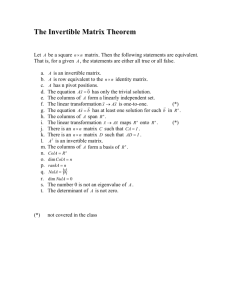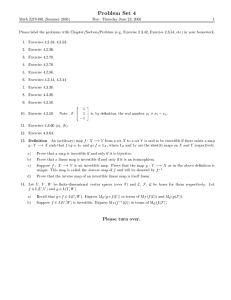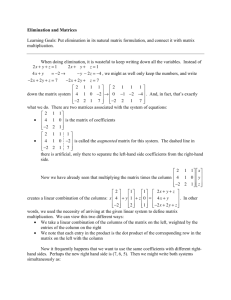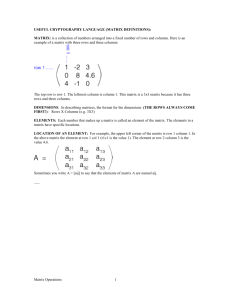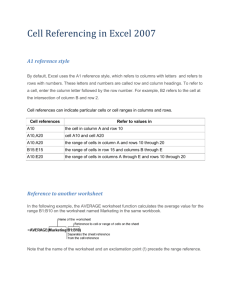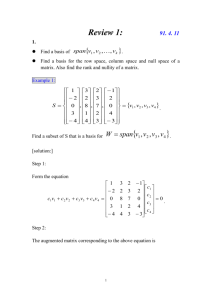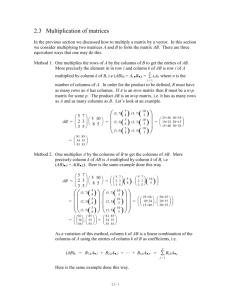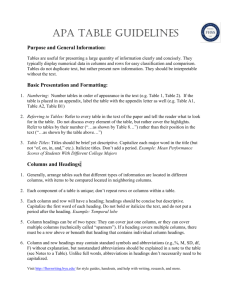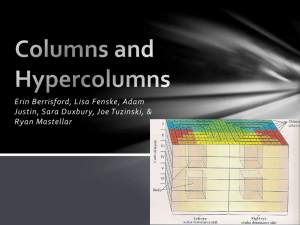here in MS word
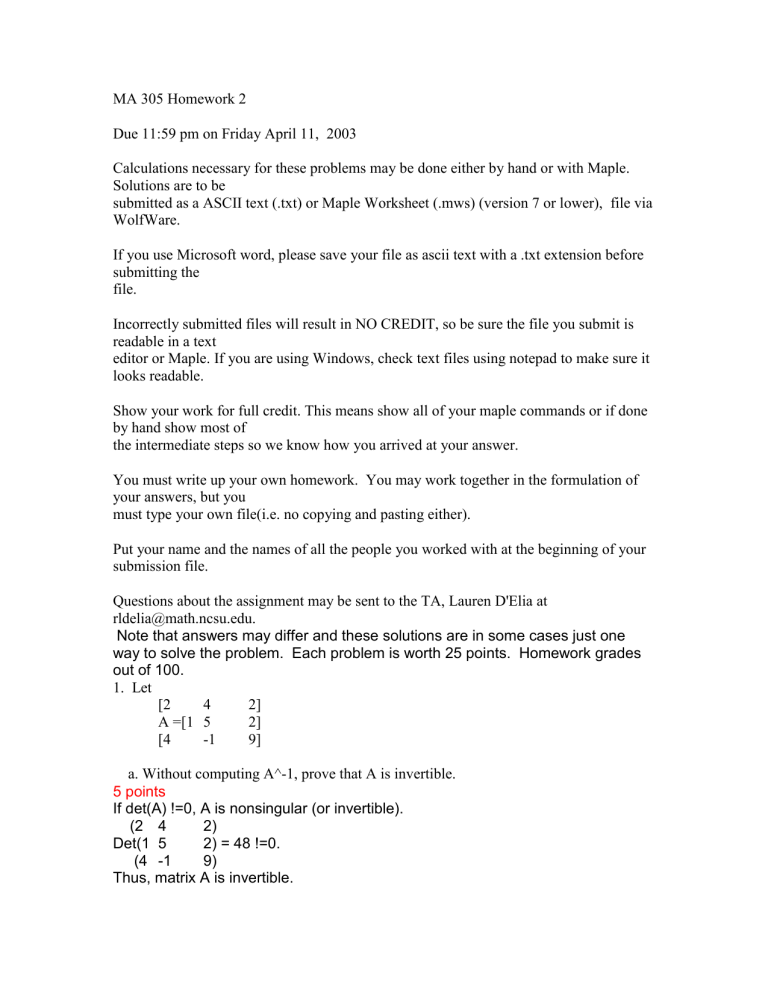
MA 305 Homework 2
Due 11:59 pm on Friday April 11, 2003
Calculations necessary for these problems may be done either by hand or with Maple.
Solutions are to be submitted as a ASCII text (.txt) or Maple Worksheet (.mws) (version 7 or lower), file via
WolfWare.
If you use Microsoft word, please save your file as ascii text with a .txt extension before submitting the file.
Incorrectly submitted files will result in NO CREDIT, so be sure the file you submit is readable in a text editor or Maple. If you are using Windows, check text files using notepad to make sure it looks readable.
Show your work for full credit. This means show all of your maple commands or if done by hand show most of the intermediate steps so we know how you arrived at your answer.
You must write up your own homework. You may work together in the formulation of your answers, but you must type your own file(i.e. no copying and pasting either).
Put your name and the names of all the people you worked with at the beginning of your submission file.
Questions about the assignment may be sent to the TA, Lauren D'Elia at rldelia@math.ncsu.edu.
Note that answers may differ and these solutions are in some cases just one way to solve the problem. Each problem is worth 25 points. Homework grades out of 100.
1. Let
[2 4
A =[1 5
2]
2]
[4 -1 9]
a. Without computing A^-1, prove that A is invertible.
5 points
If det(A) !=0, A is nonsingular (or invertible).
(2 4
Det(1 5
2)
2) = 48 !=0.
(4 -1 9)
Thus, matrix A is invertible.
b. Compute 3x3 matrices T and U such that TA=U and U is in row echelon form.
10 points
U = A in REF = (2 4
(0 3
(0 0
T = (1 0
(-1/2 1
0)
0)
2)
1)
8)
(-7/2 3 1)
c. Write T as a product of elementary matrices.
5 points
T = (1
(0
(0
0
1
3
0) (1 0
0) (0 1
0) (1 0
0) (-1/2 0
0)
0)
1) (-7/2 0 1) (0 0 1)
Opposite of values multiplied A by to obtain REF.
2. Let V be the set of all ordered pairs of real numbers with addition defined by
(x1,x2) + (y1,y2) = (x1 + y1, x2 + y2) and scalar multiplication defined by m o (x1,x2) = (mx1,x2)
The scalar multiplication for this system is defined in an unusual way and consequently we'll use the symbol o in order to avoid confusion with the ordinary scalar multiplication of row vectors. Prove or disprove that V a vector space with these operations.
10 points
Not a vector space.
10 points
Axiom 6 does not hold:
(a+b)x = ax+bx for any scalars a and b and any x in V. Can be proven w/ specific example.
3. Let
[1 -2 -1 1]
A = [2 4 -3 0]
[1 2 1 5]
5 points each (a-e)
RREF(A) = U = (1 -2 -1 1) (1 -2 -1 1)
(0 8 -1 -2) (0 0 -5 -10)
(0 4 2 4) (0 2 1 2)
(1
(0
0
1
0
½
3)
1) (
(1
(0
0
1
0
0
3)
0)
(0 0 1 2) (0 0 1 2)
Since there are 3 pivots, there mus be 3 vectors in the column space and the row space.
a.Find a basis for the column space of A.
{(1,2,1),(-2,4,2),(-1,-3,1)}
b.Find a basis for the row space of A.
{(1,-2,-1,1), (2, 4, -3, 0), (1, 2, 1, 5)}
c.What is the rank, r, of A. rank is # of pivots or vectors in row or column space = 3.
d.True or False, for any b in R3 there is a solution to Ax=b? Explain.
TRUE
The statement Ax=b also means that b can be written as a linear
combination of the columns of A. Since the column space of A is all
of R^3, every b can be written as a linear combination of the columns
of A.
e.True or False, for any b in R3 there is at most one solution to Ax=b? Explain.
FALSE.
There are four columns of A, but the column space has dimension
three. So there is some non-zero linear combination of the four
columns which is 0. If we assemble the coefficients of such a linear
combination into a vector v, then Av=0. So for any b, there are infinitely many solutions: A.x=b (guaranteed to exist form part d),
and A.(x+av)=b (x with any multiple of v added to it).
4. Let S = {(x1,x2,x3)^T | x1 = x2}. Prove that S is a subspace of R3.
You do not need to prove all axioms here…only need
10 points
1) If x = (a,a,b)^T in S, then mx = (ma,ma,mb) ^T in S
10 points
2) If (a,a,b)^T and (c,c,d)^T are arbitrary elements in S, then
(a,a,b)^T + (c,c,d)^T = (a+c,a+c,b+d)^T in S.
Bonus: up to 5 points
What is a basis for the nullspace of A in #3? Does the dim N(A) = n-r, where n is the number of columns A?
If no points were received, bonus had first part (or entire problem wrong).
X1 +3x4 = 0
X2 = 0
X3 + 2x4 = 0
(-3,0,-2,1) ^T forms a basis for N(A) ; n-r = 4-3 = 1 = dim N(A)


